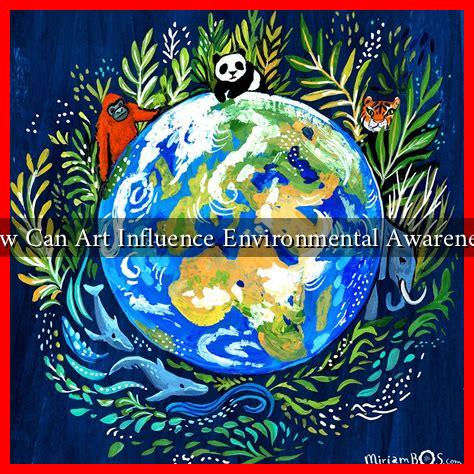-
Table of Contents
How Can Art Influence Environmental Awareness?
Art has long been a powerful medium for expression, capable of evoking emotions, challenging perceptions, and inspiring change. In recent years, the intersection of art and environmental awareness has gained significant traction, as artists use their creativity to address pressing ecological issues. This article explores how art can influence environmental awareness, highlighting its potential to educate, inspire action, and foster community engagement.
The Power of Visual Storytelling
Visual art, in its many forms, serves as a compelling tool for storytelling. Artists can convey complex environmental issues through imagery that resonates with audiences on an emotional level. This visual storytelling can be particularly effective in raising awareness about topics such as climate change, pollution, and biodiversity loss.
- Emotional Connection: Art can evoke feelings of empathy and urgency, prompting viewers to reflect on their relationship with the environment.
- Accessibility: Unlike scientific reports, art can communicate messages in a more accessible manner, reaching a broader audience.
- Memorable Impact: Striking visuals can leave a lasting impression, making the message more memorable and encouraging further exploration of the topic.
Case Studies: Art in Action
Several notable projects illustrate how art has been effectively used to raise environmental awareness:
- Christo and Jeanne-Claude’s “The Gates”: In 2005, this installation in New York’s Central Park featured 7,503 orange gates, drawing millions of visitors. While not explicitly environmental, it sparked discussions about public space and urban nature.
- Olafur Eliasson’s “Ice Watch”: This installation involved placing large blocks of ice from Greenland in public spaces to raise awareness about climate change. The melting ice served as a poignant reminder of the urgency of the climate crisis.
- Environmental Art Activism: Artists like Agnes Meyer-Brandis and her “Moon Goose Colony” project use art to engage communities in discussions about sustainability and space exploration, linking environmental issues to broader existential questions.
Art as a Catalyst for Community Engagement
Art can also serve as a catalyst for community engagement, bringing people together to address environmental issues collaboratively. Community art projects often encourage participation and dialogue, fostering a sense of ownership and responsibility towards local ecosystems.
- Public Murals: Many cities have embraced public murals that depict local wildlife or environmental themes, transforming urban spaces into platforms for awareness and education.
- Workshops and Collaborations: Artists often conduct workshops that involve community members in creating art that reflects their environmental concerns, promoting collective action.
- Art Festivals: Events like the “Eco Arts Fest” in various cities showcase environmentally themed art, providing a space for artists and activists to connect and inspire change.
Statistics and Research Supporting Art’s Impact
Research indicates that art can significantly influence public perception and behavior regarding environmental issues. A study published in the journal “Environmental Communication” found that art installations can increase awareness and concern about climate change by up to 30%. Furthermore, a survey conducted by the National Endowment for the Arts revealed that 72% of respondents believe that art can play a crucial role in addressing social issues, including environmental challenges.
Conclusion: The Future of Art and Environmental Awareness
As the world grapples with escalating environmental crises, the role of art in fostering awareness and inspiring action becomes increasingly vital. Through visual storytelling, community engagement, and emotional resonance, art has the power to transform perceptions and motivate individuals to take action. By supporting artists and initiatives that prioritize environmental themes, we can harness the transformative potential of art to create a more sustainable future.
In summary, art is not just a reflection of society; it can also be a powerful agent for change. By bridging the gap between creativity and environmental advocacy, we can cultivate a deeper understanding of our planet and inspire collective action towards its preservation.
For more insights on the intersection of art and environmentalism, visit Artsy.

